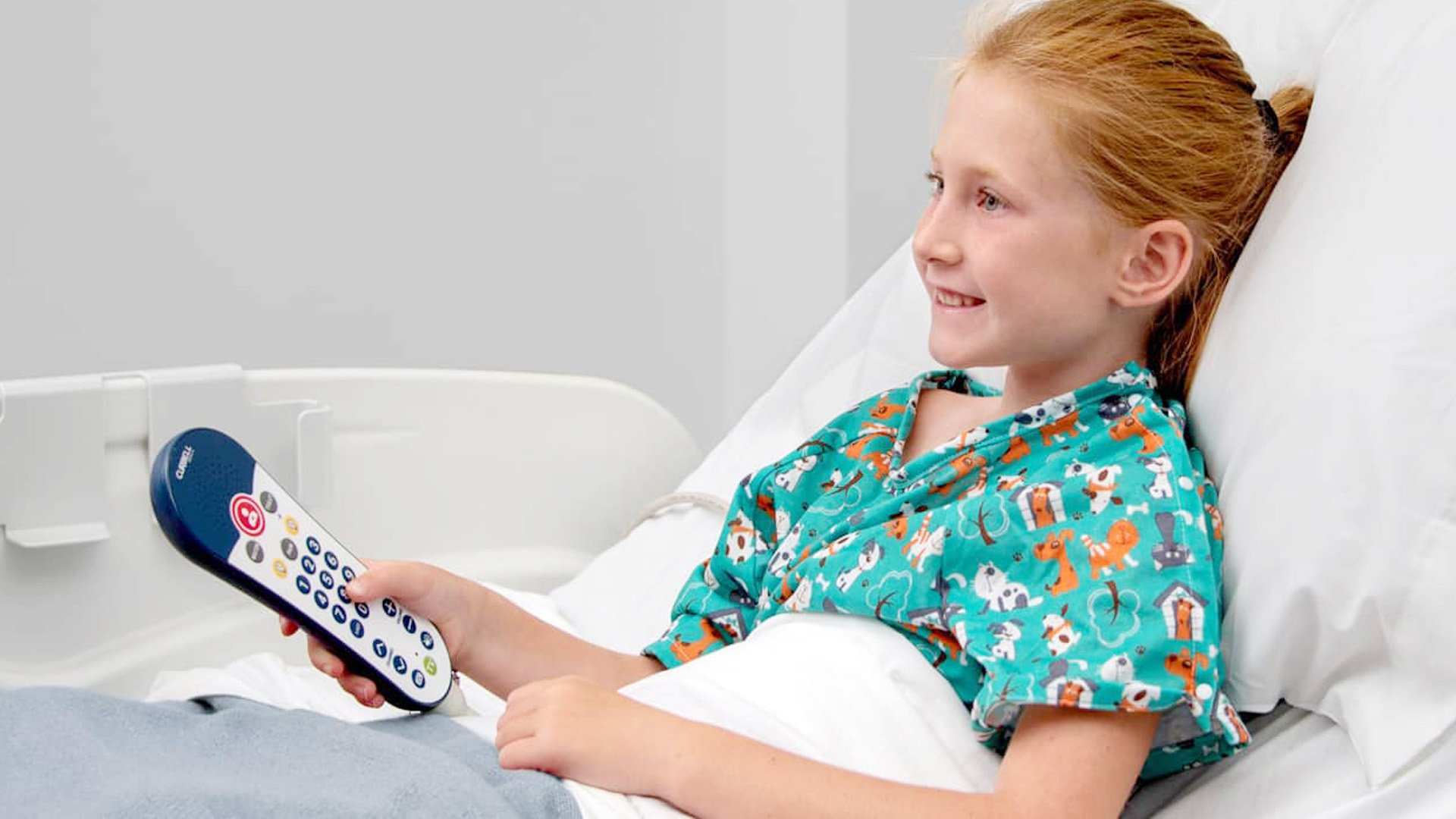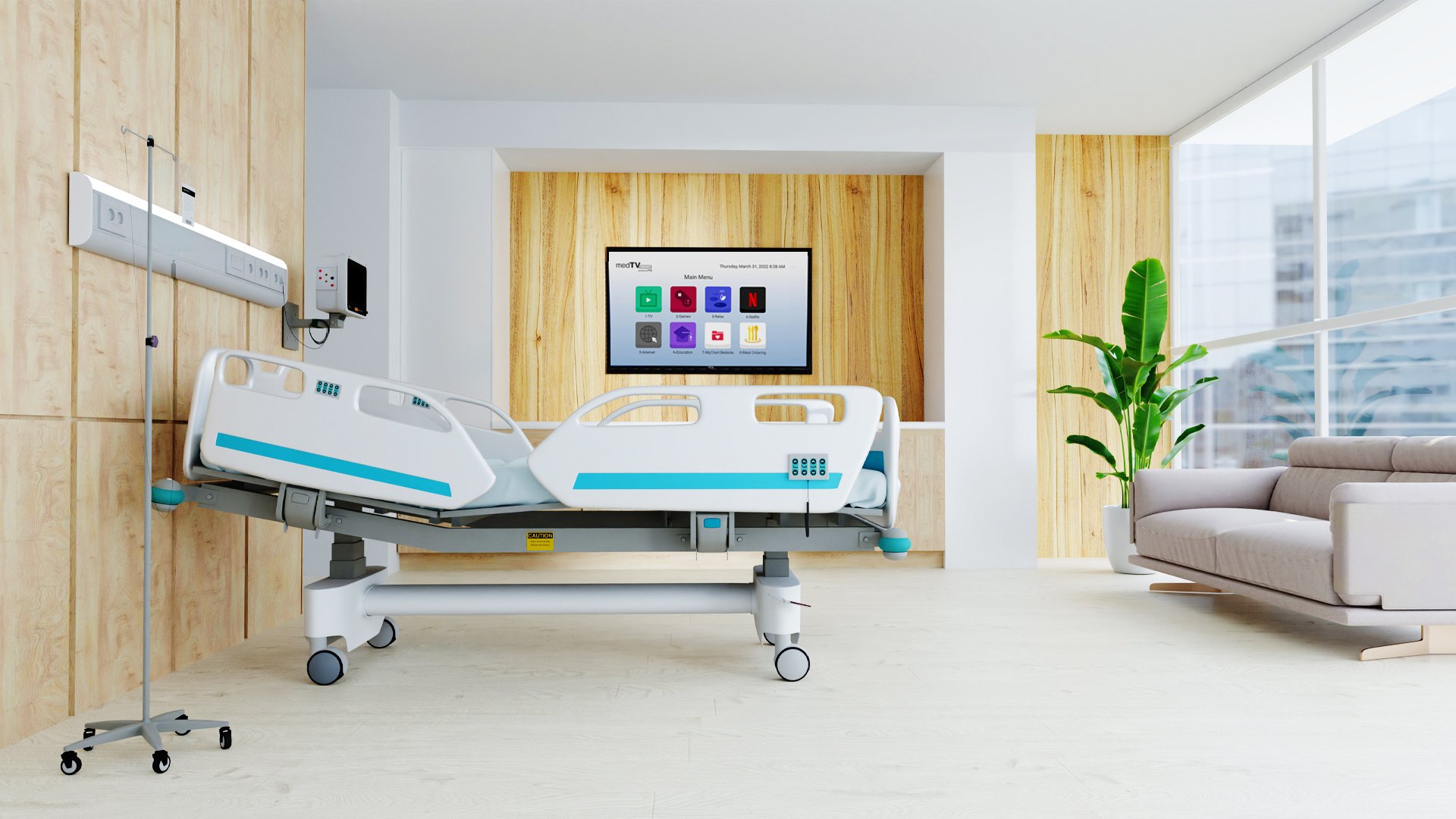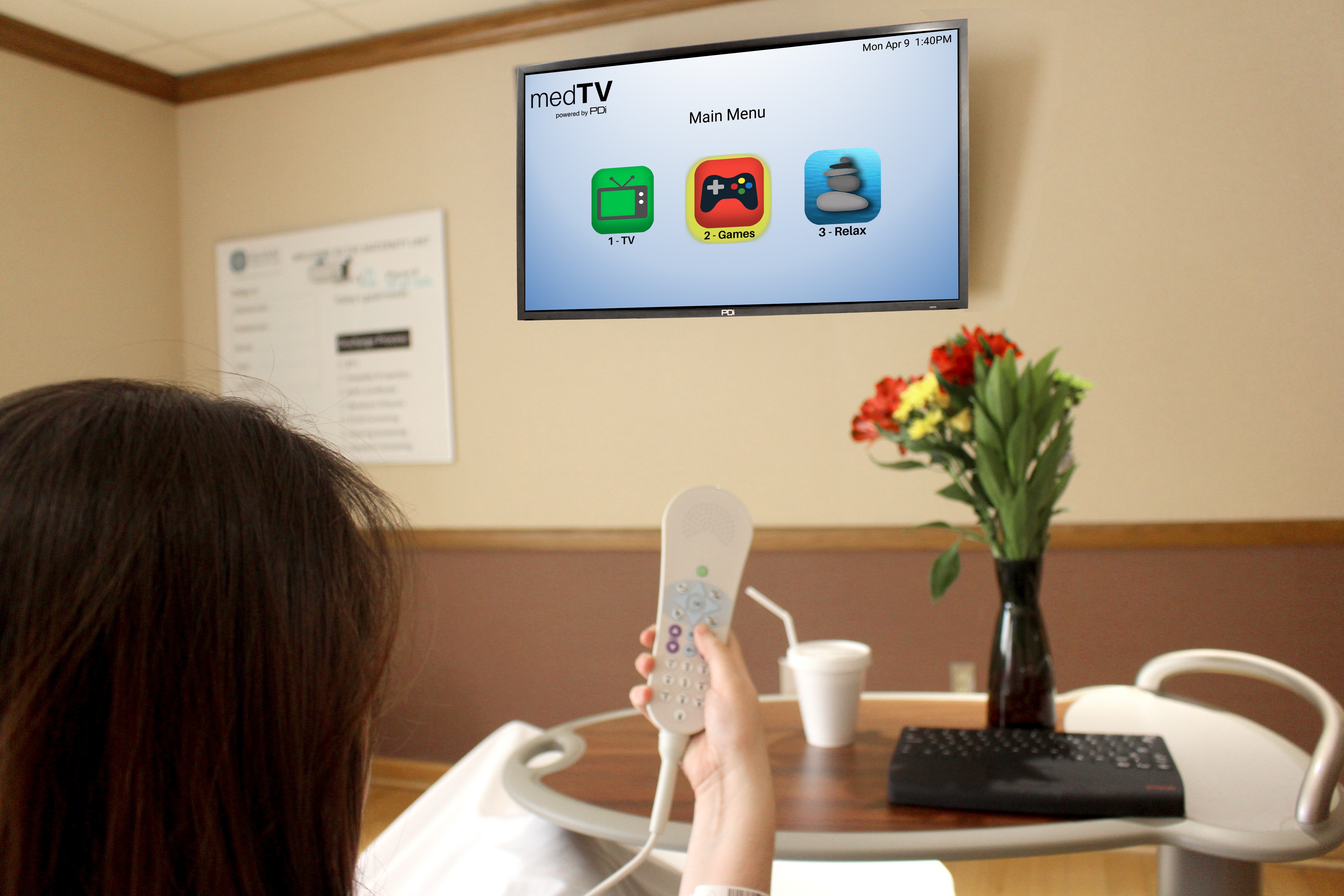Enhancing Patient Care: The Power of Smart Hospital Room TVs
Discover how smart hospital room TV technology improves patient care. Smart patient TVs offer meaningful health information and entertainment with...
2 min read
Kayleigh DeLaet
:
August 28, 2023

Gone are the days when patients were limited to controlling a hospital TV with a standard remote. Patient interactions have evolved, boasting a wide range of connectivity options, including pillow speakers, medical keyboards, and touchscreens. But how do healthcare providers go about choosing the option that aligns best with patient populations and needs?
In this article, we'll delve into the pros and cons of each method and provide insights into selecting the ideal smart TV solution for your healthcare facility.
-1.jpg?width=1920&height=1080&name=1%20(5)-1.jpg)
Pros:
Pillow speakers introduce a straightforward and user-friendly approach for patients to manage many features on their hospital smart TVs. Patients can directly adjust volume, switch channels, and power the TV on/off, requiring minimal dexterity and effort. Simple navigational buttons and a home or back button provide additional control of smart TV functions. The familiarity of pillow speakers to home remotes enables quick understanding, making them suitable for patients with restricted mobility or those seeking simplicity.
Cons:
While pillow speakers offer convenience and ease of use, they may lack the ability to perform more complex functions, such as navigating menus, typing, or accessing specific content. Such limitations could prevent patients from fully utilizing their hospital smart TV features. Additionally, patients struggling with gripping or manipulating small objects could find operating the pillow speaker buttons challenging.
Pros:
Wireless medical keyboards enable patients to engage with hospital smart TVs more comprehensively, as they would with a computer. Patients can browse the internet, enter search queries, and explore educational resources online. Another benefit is that these keyboards are designed with infection control in mind, often featuring antimicrobial materials and the ability to be cleaned or disinfected, a vital feature within healthcare settings.
Cons:
While medical keyboards offer versatility, they often require dexterity. Patients less familiar with technology or those with motor impairments might face difficulties. Additionally, a side table is usually required next to the patient bed to store the wireless keyboard.
Pros:
Touchscreens bring a familiar and intuitive interface to hospital smart TVs. Patients can navigate menus, swipe through content, and access information using gestures similar to those used with smartphones and tablets. Touchscreens customized by PDi also add an interactive element that proves particularly useful for educational content, granting patients greater control over their experience. Touchscreens are easy for the elderly and particularly attractive to more tech-savvy patients and younger demographics. US-built PDi touchscreen patient TVs can even be built with touch and pillow speaker controls.
Cons:
Maintaining hygiene standards becomes imperative for touchscreens, especially in healthcare settings. Regular cleaning is essential to prevent the accumulation of germs and bacteria. Investing in a touchscreen device designed for cleaning with a bleach solution, such as PDi’s medTAB, can address this concern. Additionally, patients unfamiliar with touchscreen technology or those with limited mobility might find this interaction method challenging.
Selecting the right interaction method for your healthcare facility depends on various factors. Consider the points below:
Patient DemographicsThe various ways patients engage with hospital smart TVs offer unique advantages and challenges. By following the steps outlined above, healthcare providers can choose the healthcare accessory that best aligns with the preferences of their patient demographics, ensuring a positive and personalized experience.
To help plan your patient TV experience, consult with PDi ProServices.
You may also like…

Discover how smart hospital room TV technology improves patient care. Smart patient TVs offer meaningful health information and entertainment with...

Updated December 10, 2024 by Cat Saettel Medical-grade TVs offer patients added entertainment and relaxation options, no internet required. No...

Part 2 - Holidays in Healthcare The holiday season brings unique emotional and mental health challenges for both patients, residents, and healthcare...